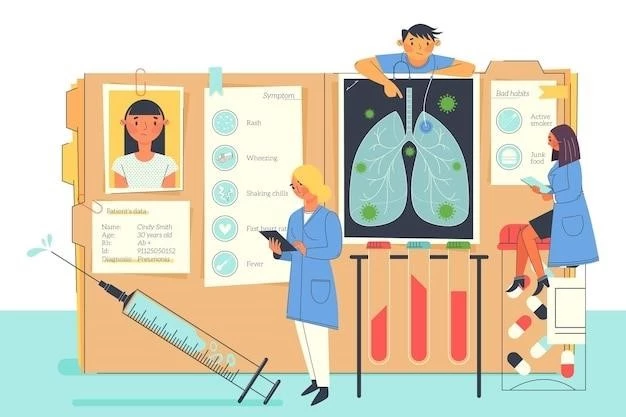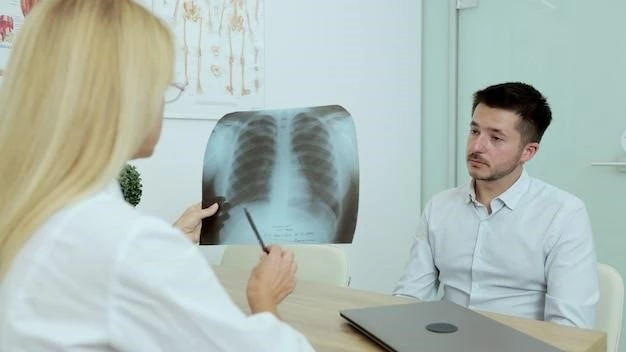Introduction to Pulmonary Agenesis
Pulmonary agenesis is a rare congenital defect characterized by the complete absence of the lung parenchyma, airways, and vasculature. Often associated with other malformations, the condition has varying clinical presentations and comorbidities impacting prognosis.
Pulmonary agenesis is a rare congenital anomaly characterized by the complete absence of lung tissue, bronchi, and pulmonary vessels. It can occur unilaterally or bilaterally, with unilateral cases more common. While bilateral cases are often fatal, unilateral cases have a variable prognosis. The condition may present with respiratory symptoms, recurrent infections, and may be associated with other congenital anomalies and syndromes. Improved diagnostic methods have led to more frequent recognition of pulmonary agenesis, aiding in the differentiation of pulmonary conditions. Etiology of the disease remains unclear, with factors like genetic abnormalities, viral influences, and vitamin deficiencies during pregnancy implicated in its development. Unilateral pulmonary agenesis is more common than bilateral cases, with left lung agenesis being the predominant form. Early diagnosis and appropriate management are crucial in addressing the clinical challenges associated with this condition.
Pulmonary agenesis, a rare congenital anomaly, is characterized by total absence of lung tissue. This condition may manifest unilaterally or bilaterally, with unilateral cases more prevalent. Patients often present with respiratory symptoms and recurrent infections, and may have associated congenital anomalies. Improved diagnostics have increased identification rates. The etiology remains unclear but is thought to involve genetic, iatrogenic, viral, and nutritional factors during pregnancy.
Symptoms and Presentation
Pulmonary agenesis presents with respiratory symptoms such as dyspnea, cyanosis, and recurrent infections. Depending on the severity, patients may also experience chest pain, fatigue, coughing, and wheezing. Infants may exhibit failure to thrive and poor feeding. Additionally, the condition can be associated with other congenital anomalies like heart defects and skeletal abnormalities. Diagnosis often involves imaging studies like X-rays and CT scans to assess lung development and associated organ abnormalities.
Diagnostic Methods
Diagnosis of pulmonary agenesis typically involves imaging studies like X-rays, CT scans, and MRI to assess the absence of lung tissue, airways, and vasculature. Additionally, diagnostic methods include pulmonary function tests to evaluate respiratory impairment, bronchoscopy to inspect airways, and echocardiography to assess heart anomalies often associated with the condition. Genetic testing may be used to identify underlying causes in some cases.

Causes and Risk Factors
Pulmonary agenesis, a rare congenital anomaly, may be triggered by genetic abnormalities, viral influences, or maternal nutritional deficiencies during pregnancy. The exact etiology remains uncertain, with ongoing research exploring potential factors contributing to the developmental failure of lung tissue. Associated risk factors include iatrogenic influences and potential disruptions in the intricate processes of embryonic lung bud development.
Etiology of Pulmonary Agenesis
Pulmonary agenesis is a rare congenital anomaly where the definitive cause is yet to be fully elucidated. Suspected factors include genetic abnormalities, iatrogenic influences, viral infections during gestation, and potential nutritional deficiencies in expectant mothers. These elements may disrupt critical stages of lung development, leading to the complete absence of lung tissue and associated structures, manifesting as unilateral or bilateral pulmonary agenesis.
Associated Risk Factors
Pulmonary agenesis, a rare congenital anomaly, is not fully understood in terms of causative factors but is believed to be influenced by genetic abnormalities, viral infections during pregnancy, and potential nutritional deficiencies. These elements may disrupt the normal development of the lung bud, leading to the complete absence of lung tissue and associated structures. Various risk factors such as iatrogenic influences and disruptions during critical stages of embryonic lung bud development may also contribute to the manifestation of this condition.
Overview of Pulmonary Agenesis
Pulmonary agenesis is a rare congenital anomaly characterized by complete absence of lung tissue, bronchi, and vasculature. It may present unilaterally or bilaterally, with unilateral cases more common. Associated with other malformations, this condition often impacts prognosis and clinical outcomes.
Bilateral vs. Unilateral Pulmonary Agenesis
Pulmonary agenesis can occur unilaterally or bilaterally. Unilateral cases, especially left lung agenesis, are more common and generally have a better prognosis compared to bilateral agenesis. The absence of one lung leads to a mediastinal shift towards the affected side, which can impact vascular structures and other organs. Bilateral pulmonary agenesis is often associated with a higher mortality rate due to the multitude of congenital anomalies and severe mediastinal shifts that can occur.
Comparison with Pulmonary Aplasia
Pulmonary agenesis and aplasia are rare congenital conditions characterized by the absence or deficiency of lung development. While both conditions involve the partial or complete absence of lung tissue, bronchi, and vasculature, they differ in specific features. Pulmonary agenesis typically results from a complete developmental failure of the primitive lung bud, leading to unilateral or bilateral absence of lung structures. On the other hand, pulmonary aplasia usually involves short blind-ending bronchi and is more commonly unilateral. Both conditions pose significant challenges and may have varying associated congenital anomalies.

Treatment Approaches
Treatment for pulmonary agenesis focuses on managing symptoms, infections, and associated complications. Depending on the patient’s condition, interventions may include respiratory support, physiotherapy, and addressing concurrent congenital anomalies. Surgical options like lung transplantation or corrective procedures for associated malformations may be considered in select cases to improve quality of life and overall outcomes.
Management Strategies
Management of pulmonary agenesis involves addressing respiratory symptoms, infections, and associated complications. Treatment strategies may include respiratory support, physiotherapy, and management of concurrent congenital anomalies. Surgical interventions like lung transplantation or corrective procedures for associated malformations may be considered in specific cases to enhance quality of life and overall outcomes.
Surgical Interventions
In cases of severe pulmonary agenesis, surgical interventions like lung transplantation or corrective procedures for associated malformations may be considered to improve quality of life and patient outcomes. These procedures aim to address complications, support respiratory function, and manage potential concurrent congenital anomalies effectively.
Prognosis and Complications
Patients with pulmonary agenesis face varying prognoses, with outcomes influenced by associated congenital anomalies and the extent of mediastinal shift. While some cases show symptom improvement over time, the condition can pose challenges and risks, necessitating comprehensive management strategies. Complications may arise from respiratory function impairments and associated malformations, requiring tailored interventions for optimal care.
Outcomes of Pulmonary Agenesis
Patients with pulmonary agenesis display varying prognoses; some show symptom improvement over time, while complications can arise from respiratory impairments and associated malformations. Management strategies focus on addressing symptoms, infections, and complications effectively to optimize patient outcomes and enhance quality of life.
Possible Complications
Complications of pulmonary agenesis can arise from respiratory impairments, recurrent infections, and associated congenital anomalies. Patients may experience issues such as respiratory distress, recurrent pneumonia, and failure to thrive. Additionally, the condition’s impact on the cardiovascular system due to mediastinal shifts can lead to further complications requiring tailored management strategies.
Pulmonary agenesis is a rare congenital anomaly with a reported prevalence of about 1 in 100,000 births. It may manifest unilaterally, with left lung agenesis being more common, or bilaterally. Improved diagnostic capabilities have led to increased recognition of this condition, impacting its prevalence in different populations.
Statistics on Pulmonary Agenesis
Pulmonary agenesis has a reported prevalence of about 1 in 100,000 births. This condition may manifest unilaterally or bilaterally, with left lung agenesis being more common. Improved diagnostic capabilities have contributed to the increased recognition of this rare congenital anomaly.
Prevalence in Different Populations
Pulmonary agenesis, a rare congenital anomaly, has a reported prevalence of approximately 1 in 100,000 births. The condition can manifest unilaterally or bilaterally, with the left lung agenesis being more prevalent. Improved diagnostic techniques have led to a better understanding of this condition, impacting its prevalence across various populations.
